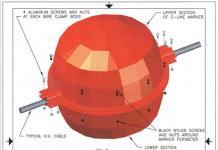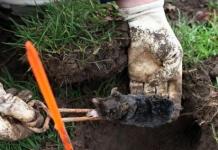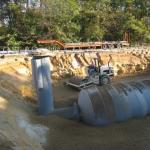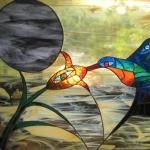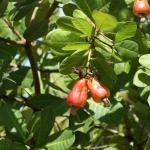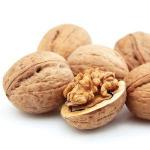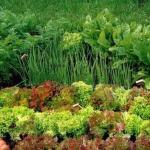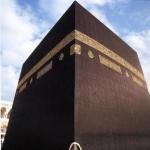Man's fascination with the animal and plant world of the distant tropics has created the interesting science of aquarium keeping. Many enthusiastic people want to build their own bright, mysterious world, in which rare vertebrates and invertebrate animals happily swim alongside amazing underwater plants. Having studied the necessary information and made the right choice of inhabitants of the aquarium, the most interesting process of decorating a modern glass house begins.
Among the many types of aquarium plants, you will definitely want Alternanthera Rhineca, like a blazing fire, to attract attention to a cozy corner of the house.
Description
Botanists have classified the plant as alternanthera into the Amaranthaceae family. All warm countries of the globe are home to a plant that develops on land, under a layer of water. Gardeners use beautiful bushes with purple and red leaves to decorate flower beds. Underwater forms of bright plants that came from the Amazon swamps have found a place for worthy decoration of artificial reservoirs and greenhouses organized in people's homes. At the same time, they serve as a natural biofilter necessary for the optimal development of, for example, aquarium fish.
Following the advice of experts, the bushes are planted on the sides, near the center of the aquarium, depending on the type of alternanthera. The stems are located under water and grow quickly. They are formed in the form of a vertical bush or a long trunk. Having reached the surface of the water in the aquarium, the plant begins to feed on air from the atmosphere. Development conditions are changing.
It is important to know! In the open space, aerial leaves begin to grow, severely inhibiting the growth of underwater leaves, which quickly fall off. The decorative quality of the alternanthera is deteriorating. To prevent an undesirable phenomenon, pinch the crown of the stem.
A simple agrotechnical technique allows you to speed up branching and the formation of beautiful bushes.
With quality care, Alternanthera rhineca has bright leaves about 4 cm long. Their width is 2 cm. The shape of the leaves is lanceolate. Oppositely located, green above with shades of brown. The lower surface of the Alternanthera reineckii leaf can be a delicate shade of pink, bright red, or magical purple. The saturation of leaf color depends on the environment, growing conditions, especially on the amount of lighting. The plant blooms in summer. Small yellow, white, and pink flowers are visible next to the leaf axils. By planting different types, you can quickly create amazing contrasting compositions. They decorate the back wall of the aquarium and create beautiful thickets necessary for the various inhabitants of aquariums.
Types, basic rules of care
Botanists have discovered about 200 species, differing in the color shades of the leaves, the shape of the bush, and optimal growth conditions. Among them, the following types are recommended most often for aquarium compositions.
Contents of Alternanthera Reinecki
For the first time in our country, Alternanthera rhineca appeared under the names Telantera osiris”, “T. lilacina", "T. Rubra as aquatic plants. The growth rate, reaching 15 cm per month, made it possible to quickly implement the planned composition options. To be successful, you must strictly comply with certain agrotechnical requirements. First of all, maintain the water temperature around 26, hardness up to 12, pH value around 7. When the water temperature drops to 20, stem growth slows down. Constant lighting with lamps, active filtration, and weekly replacement of a quarter of the water are mandatory. Natural sunlight is beneficial. The total daylight hours should be about 12 hours.

It is important to remember that with too much light, Alternanthera rhineca can die from the rapid proliferation of green algae. A sharp change in temperature conditions leads to the death of leaves and stems.
Alternanthera rhineca is classified as a type of plant that does not require a special soil composition that affects optimal growth. It receives the necessary nutrition from water enriched with mineral fertilizers. Typically, about 0.3 g per liter of water, iron sulfate and nitrogen fertilizers are added twice a month.
Coarse sand is considered the best soil. Roots develop well among it. Propagated vegetatively. Cuttings cut from large stems with four pairs of leaves are used. They are left to float on the water surface. Roots appear quickly. The finished seedling is carefully secured with soil covering the bottom of the aquarium. alternanthera has fragile stems that require extra care during care. This type is the least demanding in terms of the growth conditions created, but does not have the most intense leaf color. The bright red color is characteristic of the Alternanthera reineckii cardinalis variety, which looks spectacular next to the green leaves of other species. Alternanthera mini (Alternanthera reineckii “Mini”) is considered a dwarf form of the plant, forming lush brown bushes. The height of the plant is no more than 20 cm. The variety began to be used in 2007 for planting in the foreground of the aquarium. It is distinguished by the formation of a large number of lateral shoots coming from the mother plant. Growing conditions are normal, as for other species. When there is insufficient light, the leaves turn green.
Alternanthera violet
An unusual plant with rich red, ruby foliage stands out among other Alternanthera species. Both sides of the leaves have bright shades. Looks impressive in a group planting in the center of the aquarium. Alternanthera lilac is an infrequent visitor to home aquariums due to its very low growth rate. In addition, it grows well in fertile soil.

Alternanthera sessile
It is distinguished by the presence of a long stem when grown in a deep aquarium. Dense, branching stem when planted above ground, similar to natural conditions along the banks of marshy swamps. It is often recommended to plant in separate containers. They are fixed to the bottom of the aquarium. Alternanthera sessile requires regular, weekly trimming. Thanks to this technique, beautiful, strong bushes are formed, practically undamaged by diseases and pests. The alternanthera plant is propagated by dividing the bush and cuttings.
For this type, it is important to know that the top of the alternanthera sessile plant, which appears above the water, is cut off, planted in the ground, buried by two leaves. Cut cuttings are also immediately planted without keeping them on the surface of the water until roots form.
Alternanthera sessile is grown in conditions of good lighting and regular feeding with mineral fertilizers.
Of the long-stemmed species, Alternanthera lilacina is often grown. Throughout the year, beautiful stems of the plant, decorated with leaves, the upper side of which has an olive tint, develop evenly. The underparts can range in color from red to purple.
Alternanthera splendida
Botanists consider it one of the most beautiful species. The leaves are pink, red, purple on both sides, reminiscent of Alternanthera cardinalis. An overdose of potassium when feeding leads to distortion of the shape of the leaves. The plant has large roots and takes root slowly. It is difficult to tolerate transplantation. Sand with a grain size of up to 5 mm is recommended as soil.
Alternanthera Betzica

Alternanthera Bettzikiana (A.bettzikiana) has spatula-shaped leaves with a sharp edge. Their olive surface is decorated with yellowish, white, and red spots. Flower buds are located at the ends of the stems. The most famous varieties are golden, juvel, kuntzi, barbed, alternanthera betzikiana green.
Alternanthera rosea
The long leaves of the plant stretch upward, showing their always pink inner side. The stem is thick, has many stem nodes, from which elliptical leaves grow in pairs. The roots are thin and weak. The bush receives nutrition through small shoots located near the base of the leaves. Delicate white flowers appear in the middle of leaf pockets in summer. Next to the red alternanthera bush, an elegant, festive look is created.

Creating underwater compositions has long been a fascinating pastime for many people. Alternanthera rhineca helps to realize the most fantastic ideas of the tropical kingdom, making the corner with an aquarium a favorite place for the whole family.
Alternanthera is a charming plant that immediately attracts attention. This is a red, blazing fire in the underwater kingdom.
The plant looks great in a variety of aquascapes; as a rule, this plant is used as a focal point. Some Alternanthera species are successfully used in aquariums and ponds: Alternanthera sessilis and Alternanthera reineckii.
Alternanteras were brought to Europe by South American importers in the late seventies. Around the same time, they appeared among our amateur aquarists. The genus Alternanthera Forskal, 1775 belongs to the Amaranthaceae family. There are approximately 200 species in the genus. These are annual and perennial herbaceous plants, bushes and even trees. They are common in tropical and subtropical regions of America, Asia, Australia, Africa, and are even found on the Galapagos Islands.
All representatives of the genus have counter or opposite leaves. The flowers are usually inconspicuous and not conspicuous, but the color of the leaves is so magnificent that several species are widely used in floriculture. Alternanteras, low-growing compact plants used in gardens and parks when decorating carpet flower beds, flower beds, borders, etc. They can be given any shape, as they tolerate cutting quite well. Alternanthera vesikolor looks great, its leaves and stems are dark or copper red, turning to pink; Between the veins on the leaves there are greenish and copper spots. Alternanthera amoena (Lem) Voss and A. bettzickiana are excellent decorations for interiors, their blood-red spots contrast beautifully with the greenery of other plants. Some Alternanthera species are successfully cultivated in aquariums. They were brought to our country under the commercial names "Telantera osiris", "T. lilacina", "T. rubra". All these plants grow, bloom and reproduce well in water. Upon more detailed study by botanists, it was found that these alternanthera should be classified as follows:
Alternanthera reineckii Briquet, 1899 ("Telantera osiris");
Alternanthera sessilis (L. 1753) De Candolle, 1813, having two varieties: A. sessilis var. lilacina ("Telantera lilacina") and A. sessilis var. rubra ("Telantera rubra").
Alternanthera reineckii

Originates from southern Brazil and Paraguay, where it grows as a marsh plant, well adapted to long-term above-water life. This species is the most resistant and easily cultivated underwater conditions. For many years, A. reineckii remains a magnificent addition to decorative aquariums. In nature, it belongs to communities that have been in flooded areas for a long time. These are huge fields covered with creeping stems with their tops raised above the water. The leaves are sessile, elongated - ellipsoidal in shape, arranged crosswise (each subsequent pair is perpendicular to the previous one). Their length is 2.5-3.5 centimeters, width 0.5-1.5. The upper side is green, the lower side is pink or red. In summer, tiny sessile yellow-green or pinkish flowers appear in the leaf axils. Underwater, the stem grows vertically and quickly comes out in shallow aquariums. Above-water shoots are used to adapt the plant to terrestrial conditions. If you put them under water again, the leaves will fall off. Thus, the tops of the plant, located above the surface of the water, contribute to the preservation of the species when living conditions change.
 In an aquarium, Alternanthera rhineca is planted in the middle ground or on the sides, but not very densely, since the plant is very fragile. When submerged, the stems of the plant grow perpendicularly and quickly reach the surface of the water, and in small aquariums (up to 20-25 cm) they grow above its surface and form airy leaves. In this case, the functions of the underwater leaves lose their strength, and the plant sheds them. Therefore, the crown of the stem that has reached the surface of the water must be pinched in a timely manner. This will not only preserve the underwater leaves, but will also force the stem to branch, forming nice bushes that change color depending on environmental conditions. In an aquarium, Alternanthera rhineca grows quickly, by 10-15 cm per month.
In an aquarium, Alternanthera rhineca is planted in the middle ground or on the sides, but not very densely, since the plant is very fragile. When submerged, the stems of the plant grow perpendicularly and quickly reach the surface of the water, and in small aquariums (up to 20-25 cm) they grow above its surface and form airy leaves. In this case, the functions of the underwater leaves lose their strength, and the plant sheds them. Therefore, the crown of the stem that has reached the surface of the water must be pinched in a timely manner. This will not only preserve the underwater leaves, but will also force the stem to branch, forming nice bushes that change color depending on environmental conditions. In an aquarium, Alternanthera rhineca grows quickly, by 10-15 cm per month.
Lighting for Alternanthera Rhineca needs to be bright. Fluorescent lamps with a power of 0.5 W/l can be used as sources of artificial light. The color of the leaves and the appearance of this plant directly depend on the lighting in the aquarium. Direct sunlight is also very beneficial for the plant. The duration of daylight is at least 12 hours.
The nutritional value of the soil for alternator rhinek is not of great importance. The plant receives most of its nutrients directly from water. Coarse sand is suitable as a substrate, since the root system of Alternanthera Rhineca develops much better in it. Mineral fertilizing is very useful for rapid growth. Alternanthera rhineca should receive a sufficient amount of nitrogenous substances and trace elements. It is necessary to add divalent iron salts (for example, iron sulfate) to the water 1-2 times a month at a dose of 0.1-0.2 mg per 1 liter of volume.
Alternanthera rhineca reproduces vegetatively. Cuttings are taken from fairly large stems with 4 pairs of leaves and left to float at the surface of the water. The cuttings quickly form roots, after which they can be planted in the ground.
Alternanthera Reinecka also grows well in a humid greenhouse. For optimal plant growth, moist nutritious soil, bright lighting and an air temperature of 26-30 ° C are required. In such conditions, alternanthera forms dense thickets of bright purple color.
Alternanthera sesilis

The process of adaptation to water conditions is not hampered by the falling of the lower leaves, since new ornamental bushes are formed. With sufficient lighting in the aquarium, the upper side of the leaf is usually green, the lower side is light green or pinkish; in partial shade or shaded areas - olive-brown and violet-red, respectively. But, unfortunately, this plant has a less intense red color than other Alternanthera species cultivated in our country. It grows equally well in shaded areas and in direct light. Sufficiently mature, well-formed parts of the stems that have at least four pairs of leaves should be planted in the aquarium. This is the only species of the genus that reproduces quite quickly under water, forming powerful bushes. Groups of 10-15 plants look most attractive. They are good for decorating the back walls of small aquariums. In large species aquariums, groups of alternanthers are placed in the middle part in free places, where they form islands with an area of 20-30 square centimeters. Alternatera sessile is characterized by the fact that in its terrestrial form it has a dense, highly branched stem, and in conditions of low humidity it is creeping. The seeds are small, whitish.

Alternanthera sessilis var. lilacina found in warm regions around the globe. This plant adapts well to different forms of existence and can grow both underwater and on land. The color of plants is very variable and depends on cultivation conditions. Usually the upper side of the leaf is olive green, the underside is dark red to purple. But sometimes forms appear in which the leaves on both sides are colored intense red. In the middle zone, the plant can be successfully cultivated in open ground in summer. To keep this alternanthera in an aquarium, it is necessary to grow it in conditions of high air humidity (85-95 percent) of a tropical paludarium at a temperature of 20 to 30 ° C. Young, not yet flowering shoots, when planted under water, easily take root and relatively rarely die. The plant is insensitive to the chemical composition of water, tolerates both partial shade and excess light equally well, the optimal pH value of water is about 7. The basic rule when growing this alternanthera is to create fairly stable conditions in the aquarium. It grows well in crystal clear water without algae.Alternanthera sessilis var. rubra- the plant is emergent and can be easily cultivated in a moist paludarium. It grows very quickly: in 3-4 weeks the stem reaches a length of 15-20 centimeters with a large number of leaves. The underwater form forms branched, creeping stems above the ground, and only a third of them straighten and also begin to branch strongly near the surface of the water. In general, they reach a length of 50-60 centimeters. The leaves are opposite, 3.5-5.0 long and 0.8-1.7 centimeters wide. On both sides they are painted ruby red. The stem is also red.
Pressed to the ground with a pebble, it forms a large number of white roots in the place of an independent pair of leaves and takes root easily. The flowers are completely sessile, red or pink; they appear in the axils of the opposite pair of leaves. Since this plant comes from the tropics, it begins to bloom around the equinox, when there is 12 hours of light per day, that is, the length of a tropical day. These plants are usually planted in an aquarium in groups of 3-5 or more shoots. The most suitable place is in the middle part of the pond, where they are placed in front of taller green and yellow-green plants. Under water, they take root within ten days, but subsequently they do not grow as quickly as in a paludarium, and retain their decorative appearance well for 2-6 months. When the leaves begin to fall, the plants should be replaced with new ones. To do this, you need to have an additional greenhouse, growing new adult plants from cuttings in it, which need the highest possible air humidity and diffused lighting. In aquarium conditions A. sessilis var. rubra needs good light and slightly acidic water.
Alternanteras are amazingly beautiful plants that serve as decoration for decorative aquariums. They also look great when cultivated in open reservoirs of garden plots, where you can create compositions with both aquatic forms and those that have emerged to the surface of the water and rooted on coastal soil.
Beautiful photos with an alternanthera in an aquarium




Video of Alternanther in an aquarium
PRACTICAL NOTE ON GROWING AQUARIUM PLANTS

This note is posted in all FanFishka articles dedicated to aquarium plants. This is a cheat sheet with a link that will help you grow any aquarium plant and herbalist of any complexity.
.
First of all, the proper level of lighting is necessary.
(light intensity - Lumens)
Water parameters, care and quality water changes
The gradation of this formula is based on the degree of importance. Lighting intensity is primary, and then descending. Therefore, if your plants have holes in the leaves, they have sciatica (crooked) or there are problems with algae, then please do not read the “bad advice” - this is chlorosis (lack of iron), this is a lack of potassium... diarrhea, phimosis and endometriosis )
You always need to solve the problem of setting up an herbalist from major to minor. Plants will die more quickly from a lack of lighting than from a lack of Fe and K. Moreover, the latter are always present in one degree or another in the aquarium, but it is difficult to measure their precise value.
Below, let's go from the main to the minor.
Lighting in an aquarium with plants. Remember, the most important thing in light is - All other lighting characteristics: spectrum, Kelvin, PAR/PAR, Ra... are important, but secondary. There will be no intensity of lighting, there will be nothing. At the same time, the lighting intensity must be balanced - selected specifically for your project (height of the water column, number and types of plants, daylight hours).
Based on the above, choose aquarium lighting primarily by the number of lumens, and then everything else.
Lighting is the most expensive part. The most budget-friendly solution is to install conventional ones. Fortunately, they are now very thin and aesthetic. And believe me, under them everything grows with a bang, of course, provided that all the other components are present.



If you want professional lighting or aesthetics. Then you will have to fork out some money. The amounts can vary quickly from 10,000 to 50,000+ rubles for a 100 liter aquarium. It’s difficult to advise anything, because... Everyone has different needs and capabilities. - Tetra, Laguna, ISTA lighting.




We tried to briefly and objectively talk about them. Then it's up to you. In any case, we do not really recommend that you pay attention to handicraft lighting assembly from folk craftsmen. Not all of them, but as a rule, they shove who knows what kind of diodes into such an assembly, assemble it all on their knees... and believe me, more than once on the forum you hear echoes of the consequences of such a purchase. Still, a company is a company. At a minimum, you are given warranty and post-warranty service.
If you are a beginner, your first herbalist, then LED spotlights are your choice. Let's move on, otherwise this note isn't very short =)
The plant is approximately 90% water, the remaining 10% is dry matter. Of that 10%, 46% is carbon. This is why CO2 supply is so important in a planted aquarium.
Plants in an aquarium obtain carbon “from water” - from carbon-containing compounds. But the natural concentration of C-carbon in water is small and is only sufficient for unpretentious plants, but they, and even more so, will be happy with additional carbon feeding. You can provide CO2 supply in other ways.
The best, professional, simple and subsequently budget option is to supply carbon dioxide through a cylinder. One thing, but - the starting purchase of a set: a cylinder, an MG valve, a diffuser.... will hit the budget.
Is it possible to do without CO2, but for a couple of bushes of simple plants (, etc.).

On sale you will find two series of ISTA Aluminum CO2 Cylinder cylinders, with horizontal and vertical threads of 1 and 3 liters.
All fertilizers, of any brand, can be divided into and.
Macro fertilizers- this is nitrate NO3 and phosphate PO4 from which plants take N-nitrogen and P-phosphorus. These are the most important elements after CO2 - C-carbon.
Remember - . Always keep it under control and everything will be ok. Right, based on our observations, the Redfield proportion rules only in the full N-P-C ratio. Incomplete proportion - without carbon C does not give good results.
Micro fertilizers. These are all the other less important elements that are necessary for plants (see link). There is no point in putting too much emphasis on them. Firstly, all of them are contained in one quantity or another in tap water and are restored in the aquarium with changes. Secondly, an overdose of micro very quickly leads to an outbreak of algae.
A common mistake made by beginners is not understanding what they are pouring into the aquarium. For example, let’s take such a popular and popular fertilizer as. Read the product summary at the link - it strengthens, stimulates, and gives a chic body shape.
A beginner, without delving into the essence, uses it and gets an outbreak of algae, writes on the forums - “Like, wow, what a bad Tetra.” And the trouble lies not in the drug, but in misunderstanding. The beginner has a Redfield bias (let’s say N and P are generally zero) and instead of making up for the lack of these primary elements, he fills the aquarium with Tetra PlantaMin - a micro-fertilizer (iron, potassium, manganese). As a result, going over the micro is only detrimental, because... plants lack the base - nitrogen and phosphorus.
Thus, you must understand what plants lack and understand fertilizers.
How to understand what plants lack? It's simple. Now the market is filled with a variety of expensive and not so expensive aquarium water tests. We recommend inexpensive domestic ones - they are sold online and offline.

The minimum set of tests for an herbalist is NO3 and PO4. It is advisable to have the entire nitrogen range: NH4, NO2, NO3. As well as kH and pH tests.
Tests help us monitor the situation in the herbalist, but over time it is advisable to learn to see and feel the aquarium for yourself. With experience you need to move away from “convulsive testing”; the best aquarium test and tool is ourselves.
Let's summarize this part. Macro, it’s macro in Africa too. The link above generally contains a recipe on how to make them yourself. If you are not yet ready for self-mixing, then you will always and everywhere find a line of fertilizers from Tetra:

Of course, there are many other brands that produce aquarium fertilizers. There is an opportunity, use even ADA products. All markers are different in taste and color. The main thing is to use it with a clear understanding of what you are using it for and what you want to get in the end.
We can recommend from a professional line of fertilizers at an adequate price (soils, soils, macro, micro, stimulants, etc.).
So, something like a note turns into the Talmud. Which is not surprising - the topic is very extensive. One moment left.
Water parameters for aquarium plants. and please look at these articles, they reveal the essence quite well.
Here we note that the quality of photosynthesis is influenced by the process of caring for the aquarium: water parameters (kH, pH below 7), high-quality filtration and aeration, competent and timely water changes.
Please study materials on the topic, be involved in the hobby and do not stop there. This is the secret of success. An aquarium is a whole ecosystem to which it is impossible to apply one magic pill. In an aquarium, everything should work comprehensively and in balance.
Often newcomers step on a rake, only because they behave like a monorail tram. “Algae has appeared” --- “More remedies for algae” --- “Bought” --- “Filled it up” --- “Not Waving” --- ... But what if we say that the absence of algae in the aquarium is a whim aquarists! What if you don't have to fight them?
Let's take any remedy for algae, in 99% of cases it is a 2.5% aqueous solution of glutaraldehyde. Therefore, there is little point in choosing a remedy for algae. Glutaraldehyde is an aldehyde in Zimbabwe. The cheaper the better. The domestic one is quite good.

But the trick is that no algaecide will help you if you do not find the root cause of the appearance of algae - imbalance in: light, fertilizers, care and water parameters. As soon as you eliminate the cause, the algae will recede on its own. That is, there is no need to “strangle the algae” - they are natural inhabitants of the aquarium, they just need to be “kept in check.” Algaecides help in the fight, but they are not a panacea.
Let me conclude here because the topic is very fascinating, but endless.
Thanks to all,
Finally, we suggest you watch a couple of videos
There are more than 200 species of plants, which differ in the size of the bushes and the color of the leaves. The flowers are small and look inconspicuous against the backdrop of lush foliage. The leaves, depending on the type of bush, range from light green to purple. Gardeners value plants with red hues for their decorative value.
The red alternanthera can most often be found in an aquarium.
Bushes grow up to 25 cm in height. They are spreading, and after cutting they spread like a carpet on the ground. There are plants in the form of grass.
The peculiarity of the alternanthera is that it changes color depending on the brightness of the light. This tropical plant is grown for the garden and aquarium. Popular types:
- Among aquarium plants, Reineka mini is distinguished. The bush is fragile and brittle. It develops under water only if the top is pinched. Leaves are up to 4 cm long, green-red in color.
- Among garden plants, Alternanthera brasiliensis is distinguished. Its leaves are green-red with an orange tint. Plants of the Betzika species grow up to 15 cm in height. The leaves are sharp, red, yellow or green.
There are large-leaved, narrow-leaved, triangular-leaved and curly-leaved varieties.
Growing an alternanthera herbaceous plant for open ground
Propagating shrubs is not easy. It may take about a year for the plant to begin to grow. Propagated in the following ways:
- seeds;
- dividing the bush;
- cuttings.
The first method is rarely used; mostly the latter method is used. The cuttings are cut in the fall and immediately planted in greenhouse soil. The soil is prepared nutritiously with a high content of lime and neutral acidity. The temperature in the greenhouse is maintained at up to 25˚C. Cuttings take root in 3-10 days. The soil is kept very moist. After a week of hardening in the spring, the plant is planted in open ground.
They propagate by dividing the bush in May. 1-2 parts of the mother bush are planted in a separate hole.
Although the plant is a perennial, it is grown as an annual. It does not tolerate frosts below 0˚C. If the air temperature drops below 10˚C, the plant sheds its leaves. It is advisable to transplant mother bushes into a greenhouse for the winter.
To prevent the plant from losing its decorative appearance, it is planted in a sunny area. With sufficient lighting, the color of the leaves is rich.
Characteristic features of the plant, tips for growing alternatera in a home aquarium and garden, recommendations for propagation, control of possible pests and diseases, facts for gardeners, types.
The content of the article:
Alternanthera belongs to the large Amaranthaceae family, which is sometimes called Shchiritsa. This includes representatives of the flora, in the embryo of which two cotyledons are formed. Almost all species included in the genus grow in lands where there is a tropical or subtropical climate. These include areas of America, Asia, the Australian continent and Africa, but such plants can be found even in the Galapagos. In their natural environment, they prefer to settle in coastal areas, near waterways, which often experience floods or floods.
| Family name | Amaranthaceae or Shchiritaceae |
| Life cycle | Annual or perennial |
| Features of growth | Herbaceous or subshrub |
| Reproduction | Seed and vegetative (cuttings or division of rhizomes) |
| Open ground planting period | Seedlings are planted in early June |
| Substrate | Neutral, medium moisture |
| Illumination | Open area with bright lighting |
| Humidity indicators | Moisture-loving |
| Special requirements | There are some difficulties |
| Plant height | 0.1–0.25 m |
| Color of flowers | White, pinkish, green |
| Type of flowers, inflorescences | Globular |
| Flowering time | May June |
| Decorative time | Spring-summer |
| Place of application | Aquariums, flowerpots, carpet beds, borders, floral designs or portraits, flower beds, pool landscaping |
| USDA zone | 4, 5, 6 |
Sometimes you can hear people call the alternanthera the Alternate Anther. But the plant gets its scientific name from the combination of the Latin words “alternus” and “anthera”, which translates as “variable” and “stamen”. The result is the phrase “variable stamens” and, in all likelihood, this indicates the alternation of sterile and fruitful stamen formations.
All Alternanthera growing in nature have a herbaceous or semi-shrub form and do not exceed 10–25 cm in height. The shoots are distinguished by good branching and through them the formation of wide bushes occurs. The development speed of such bushes is quite high and they have the ability to reproduce quickly. Often, because of these properties, alternanthera is usually used as a ground cover crop. These representatives of the flora can be grown both in an aquatic environment (aquariums) and as a potted crop. At the same time, the anther is also able to extract nutrients from both water and soil. It is usually grown as an annual or perennial plant.
Alternanthera has gained popularity among gardeners and aquarists because of its brightly colored foliage. The shape of the leaf blades is lanceolate. The coloring can take on shades of reddish-brown, orange, yellow or yellowish-green. It happens that there is a pattern of whitish spots on the surface of the leaves. All color combinations depend on the species.
When flowering, small and inconspicuous flowers are formed, which do not represent any decorative value. They gather inexpressive dense inflorescences, crowning the tops of the branches. The flowers are filmy, their color takes on a white, greenish or purple tint.
Tips for keeping Alternanthera in a pot or home aquarium

- Lighting and choice of planting site. Only under the influence of bright lighting will all the beauty of the foliage shades be revealed. The more sunlight illuminates the bush, the richer the color the foliage will become. With a lack of light, the leaf plates will gradually acquire the usual green color, and, ultimately, it will simply become pale. The duration of daylight should be at least 12 hours, so when growing in an aquarium, lights are needed.
- Water indicators for aquarium keeping. If you decide to grow the plant in an aquarium, then an acidity in the pH range of 6.2–6.8 is suitable for it, while the water hardness should be from 2 to 12 dKH.
- Content temperature alternantera in summer should be in the range of 24–28 degrees, and with the arrival of winter not lower than 15 units.
- Humidity. Very high humidity parameters are most suitable, and only under such conditions is Alternanthera flowering possible, although its flowers do not have any decorative value, but the plant feels fine in dry indoor air.
- Watering When keeping alternanthera in a pot, regular planting is required throughout the growing season. But it is important to remember, for some varieties, that excess moisture is harmful.
- Trimming. If you regularly trim the shoots, they begin to bush very much.
- Fertilizers. It is recommended to support the plant with mineral fertilizers during the growing season, which should be applied once every 15–30 days. When growing in an aquarium, divalent iron salts are added to the water once every two weeks.
- Alternanthera wintering. Because of her love for warm climates, she will not tolerate winter in our latitudes, therefore, when heat indicators approach 15 degrees, the bushes are dug up and planted in containers. During the autumn-winter period, they are kept in a room with good lighting, where the temperature is in the range of 15–17 degrees.
- General tips for keeping an aquarium. It is necessary to change the water frequently - every week up to 20% of the container volume. The plant does not like to be overgrown with algae and loves crystal clear water, so a powerful filter is used.
- Replanting and tips for choosing soil. This tropical plant can be grown as a potted plant. Since its growth rate is low, it should be replanted infrequently, only if the container has become small for the root system and the size of the bush itself. It is recommended to use a soil mixture of leaf and turf soil, with the addition of humus and coarse sand - all parts of the components are taken equal. When kept in a pot, you need to lay a drainage layer on the bottom to avoid stagnation of moisture. You will also need to make holes in the bottom of the container to drain excess moisture. When growing Alternanthera as an aquarium plant, soil does not play a special role, so special compositions of substrates for aquarium flora should be used. They should contain coarse sand, which has a positive effect on the growth of bushes. In an aquarium tank, it is recommended to place Alternanthera on shelves arranged on the sides so that the stems have the opportunity to rise above the surface of the water.
- Application of anther. Since the plant is small in size, it is customary to grow it not only in aquariums; such bushes decorate alpine slides and mixborders, are planted as border landscaping, and also create carpet flower beds, flower portraits and drawings. Because of its love for moist soils, it can be planted in the coastal zone of artificial and natural reservoirs.

You can get a new plant by seed and vegetative methods (cuttings and dividing the old bush).
The first method is quite difficult, since Alternanthera often does not produce flowers, so in floriculture it is recommended to use the second. In this case, preference is given to cuttings. It is customary to cut the blanks for this in the autumn. Then the cuttings are planted in nutritious and heated soil, which can be a sand-peat mixture. The container with cuttings is covered with transparent plastic film and placed in a well-lit place without direct sunlight. The twig blanks are buried down to the first leaf blade, and the length of the cutting should be at least 8–10 cm and 8 leaves. Care will consist of airing and moistening the soil. When young leaves appear, the cover can be removed and the young alternanthera can be accustomed to indoor conditions.
After signs of increased growth appear, the tips of the shoots need to be pinched, which will help them begin to branch, forming new shoots on the sides. Cuttings can take root in 8–10 days. When May comes and the return frosts pass, these plants are transplanted to a prepared place in the garden. To get more lush bushes, it is recommended to place 2-3 young seedlings in one planting hole. If Alternanthera is planned to be grown as a potted crop, then a small pot is selected.
When propagating a plant in an aquarium, the cuttings are simply left to float on the surface of the water. Soon it will develop root shoots and such seedlings can be planted in the substrate.
With the arrival of spring, you can divide the overgrown bush. Usually on autumn days, when heat indicators begin to decrease, the bush of the mother specimen is transplanted into a pot and kept in greenhouses or a prepared room. In such a place it is necessary to create good lighting and heat indicators are maintained at about 15 degrees. In winter, watering is carried out moderately, waiting until the substrate dries on top. With the onset of May days, the alternanthera is pulled out of the flowerpot, its elongated root shoots are pruned, and then division is carried out. It is necessary that each division has a sufficient number of roots and shoots. Then the plant is planted in a permanent place in the garden, pond or pot.
Control of possible pests and diseases of alternanthera

The plant is quite resistant and is not susceptible to diseases or pest attacks. But still, with frequent violations of maintenance conditions, it can be affected by gray rot, especially if this representative of the flora is grown as a potted crop. This problem occurs when the soil moisture is high. To cure, it is recommended to remove all affected parts of Alternanthera, and then treat the bush with fungicidal agents. It can be copper sulfate or similar preparations with a similar effect.
Among the harmful insects that cause harm to the alternatera, spider mites, aphids or whiteflies are distinguished. If signs of damage are detected (whitish specks on the back of leaves or white midges, cobwebs on leaves and twigs, or small greenish bugs), it is recommended to treat with insecticidal preparations with repeated spraying after a week.
Facts for gardeners about Alternanthera, photo of the plant

Since there is information that some varieties have poisonous properties, it is important to clarify this aspect before purchasing.
Types of alternanthera

- Alternanthera reineckii. Its native distribution area is in South America. The branches of this shrub are about 25 cm long. The shoots have sessile foliage, but sometimes the leaves are crowned with short petioles. The color mainly includes various shades of red. The root system is delicate. It can be grown in aquarium conditions, where the plant is attached to the walls of the container, then the stems can spread along the surface of the water, but if they are completely immersed under water, the growth rate will slow down significantly. In cultivation there is a dwarf-sized variety, Alternanthera mini, which is distinguished by even smaller bushes and foliage.
- Alternanthera sessilis. This shrub can reach a height of up to 30 cm. The variety is relatively undemanding and has gained popularity among aquarists due to the pink-green coloring of the foliage, but can be grown in humid greenhouse conditions. If completely submerged in water, the growth rate is not reduced as much as that of Alternanthera reineckii.
- Sweet Alternanthera (Alternanthera amoena) or as it is also called Alternanthera charming. The length of the shoots is not so long and their maximum size reaches 10–20 cm. This species is distinguished by the fact that in the lower part of the branches there is abundant branching. Moreover, while the plant is young, the shoots are covered with pubescence and have grooves. The foliage is colored in greenish-red tones, sometimes giving way to an orange tint. The shape of the leaf plate is oblong-oval or in the form of a narrowed ellipse. During flowering, filmy small flowers are formed, collected in compacted apical inflorescences. The color of the flowers is whitish. The native growing areas are in Brazil.
- Alternanthera versicolor mainly growing in natural conditions in Brazilian territories. It can grow as a subshrub or have a herbaceous form. A perennial that approaches 15 cm in height. Due to the strong branching of the shoots, the shape of the plant resembles dense bushes with spreading outlines. When the stems are young, their surface is covered with slight pubescence.
The leaf blades have a blunt-pointed oblong-spatulate shape, with a narrowing towards the petiole. Its length is quite short. The surface of the leaves is covered with wrinkles. The name of the variety indicates the unusual color of its foliage, which mixes different shades of pink, yellow, red and greenish. This species has a large number of garden variations. - Alternanthera lilacina or as it is also called Alternanthera lilacina. Naturally, the eye cannot help but stop at the decoratively colored foliage, which is varied on the upper and lower sides. So the top of the leaf is red or greenish, and the back side is dark burgundy. The shape of the leaf plate is oblong. The shoots have straight-growing outlines. If the plant is grown as an aquarium culture, then the length of its shoots can approach half a meter. If the owner provides fairly humid growing conditions, then the formation of whitish flowers is possible.
- Alternanthera red round It is also distinguished by rather long shoots, on which leaf plates are located in opposite order. They are attached to the branches by means of short petioles. On average, the length of a bush is 20 cm. The growth rate of this species is very low, but if all growing rules are followed, the plant will delight you with flowering. However, such flowers do not have beauty.
- Alternanthera bettzickiana takes the form of a subshrub or has a herbaceous form. This perennial plant can reach a height of 15 cm with its vertically growing shoots. At the very base, the branches have pubescence. Since they are distinguished by strong branching, they can form spreading thickets. There is a sharp point at the tops of the leaf blades. The leaf shape is spatulate with a slight bend in the central part. The color takes on shades of olive green, while on the surface of the foliage there is a pattern of specks of whitish, white-yellow and reddish shades. Flower capitate inflorescences originate in leaf axils that grow on the tips of the shoots. This species has a large number of forms, the leaves of which are cast in rich shades of green, red or yellow.
Latin name: Alternanthera.
Family: amaranthaceae (Amaranthaceae).
Homeland: tropics and subtropics of America, Africa, Asia, Australia.
Form: perennial herbaceous or subshrub plant.
Description
Alternanthera is a perennial herbaceous or subshrub plant. Plant height is up to 25 cm. Alternanthera stems are fragile, branch strongly, forming a spreading bush. The leaves are opposite, small, lanceolate. The color of the leaves is very diverse and constitutes the main decorative value of the plant. In the light, the color of the leaves becomes brighter and more intense. The flowers are small, inconspicuous, located in the axils of the leaves, collected in capitate or spike-shaped inflorescences.
About 200 species of alternanthera are known, and there is still a lot of confusion among the species names. Some species grow exclusively in water and are of interest only to aquarists. The main types of alternanthera used in landscape design, have numerous varieties and forms.
Alternanthera Betzick (A. bettzickiana). Homeland - Brazil. Height up to 15 cm (sometimes up to 20 cm). The stems grow vertically, pubescent at the base. The leaves are spatulate, pointed at the ends. The color of the leaves is two-sided: olive-green on top, yellow-red spotted below.
Alternanthera serrata (A. denticulata). Homeland - South America. Height up to 35 cm. Stems are straight, branched. The leaves are linear, narrow, 3 cm long. The color of the leaves depends on the variety.
Alternanthera is lovely, oralternanthera dear (A. amoena). Homeland - Brazil. Height 10-20 cm. Stems are strongly branched from the base, pubescent below, furrowed. The leaves are oblong, lanceolate, pubescent below, with bright red petioles. The color is green-red-orange.
Alternanthera versicolor (A. versicolor). Homeland - Brazil. According to some opinions, it is a type of Betzick's alternanthera. Height up to 15 cm. Strongly branched stems form spreading bushes. Young shoots are pubescent. The leaves are wide, oblong, spatulate, tapering towards the petiole, wrinkled, blunt-pointed, shiny. The color is variegated green-red-pink.
Alternanthera sessile (A. sessilis) is of tropical origin and grows along the banks of water bodies. The length of the stems is 20-50 cm. It spreads by rhizomes and takes root by stems. Thus, a decorative mat is formed along the shore and surface of the reservoir. The leaves are opposite, narrow, and the color ranges from bright green to beet green, depending on lighting conditions.
Growing conditions
In order for the alternanthera leaves to be colored as intensely as possible, the plant should be planted in the sunniest part of the garden. Alternanthera needs warmth; it does not tolerate frost. It prefers calcareous, nutritious soils, but can also grow on neutral soil. Moderate humidity is required.
Application
To decorate a site, alternanthera is most often used as an annual ornamental foliage plant, without bothering with the hassle of transplanting it into a greenhouse for the winter.
Alternanthera is the star of carpet floriculture. Its low growth, excellent tolerance to haircuts, and most importantly, a huge variety of colors allow this plant to be used for carpets. flower beds, borders, alpine slides, floral drawings, figured compositions. With the help of a competent haircut, you can give the alternanthera an ovoid, spherical, comb-like shape.
Alternanthera sessile is used to decorate small reservoirs. In summer it is planted on the bottom in shallow places or along marshy banks.
Care
Alternanthera is very thermophilic, so in winter mother plants are transferred from the street to bright greenhouses with a temperature of +12 - +16. Plants that overwinter outside in relatively warm climates still need shelter. Alternanthera is replanted back into the ground only after spring frosts. If night frosts are possible in summer, the plant also needs to be covered. 
Alternanthera requires moderate regular watering all year round. It is not allowed to water with cold water. It is not necessary to spray the plant.
The main care activity that an alternanter requires is regular, literally weekly haircuts. Thanks to this procedure, the plant bushes strongly, develops many additional leaves and becomes fully decorative.
Alternanthera sessile is placed in containers at the bottom of the reservoir to a depth of 50 cm. It is necessary to limit its spreading and take it away for the winter in time. Overwinters in a cool room.
Reproduction
Alternanthera propagates by dividing old plants and cuttings. When propagated by division, long roots can be cut off without harming the plant. The planted plants should initially be in a bright and warm place. When propagated by cuttings, the planted alternanthera is first kept under a transparent bag in a very warm place. When young leaves appear on the plant, the bag can be removed.
Diseases and pests
Alternanthera is resistant to diseases and pests. Potential problems include gray mold, aphids, spider mites and whiteflies.
Popular varieties
Varieties and forms of Betzick's alternanthera
‘Aurea’ (‘Golden’)- a plant with large yellowish leaves.
‘Juvel’- large-leaved, tall alternanthera with carmine-red leaves.
‘Kuntzii’ (‘Kuntzi’)- a plant with densely arranged yellow leaves, dull green at the base.
‘Paronychioides’ (‘Barbed’)- low-growing alternanthera with curly pinkish-red leaves.
Varieties and forms of alternanthera serrata
‘Purple Knight’- tall (up to 50 cm) alternanthera with dark purple leaves.
‘Royal Tapestry’- alternanthera with leaves of red, copper-red, purple and burgundy shades.
Varieties and forms of Alternanthera charming
‘Amabilis’ (‘Excellent’)- a plant with olive-green leaves with red spots.
‘Rosea’ (‘Pink’)- low-growing alternanthera with pinkish-red leaves with an orange tint.
‘Ficoidea’ (‘Fig’)- a plant with leaves of pink-violet-green color.
'Metallica'- tall, large-leaved alternanthera with dark brown leaves with a purple tint.
Varieties and forms of alternanthera variegated
‘Aurea’ (‘Golden’)- alternanthera with golden yellow leaves.
‘Tricolor’ (‘Tricolor’)- a plant with green-pinkish-red leaves.
Varieties and forms of alternanthera sessile
-
Name: from the Latin "altemans" - volatile, which is explained by the polymorphism of many species.
Description: genus has about 200 species, distributed in the tropics and subtropics of America, Africa, Asia and Australia. Perennial herbaceous or semi-shrub plants used as annual decorative deciduous plants. The flowers are small, inconspicuous and have no decorative value. Used to decorate ponds Alternanter sedentary (Alternanthera sessilis). Other species, due to their decorative significance, are considered the main crop among carpet plants. They are distinguished by significant diversity in color, pattern and shape of leaves. They grow in the form of low, spreading bushes up to 25 cm tall. After shearing, they bush a lot. There is a lot of confusion among species names, which has not yet been resolved.
Alternanthera dear- Alternanthera amoena Voss

Homeland - Brazil.
Perennial low-growing plant 10-20 cm tall. The stems are furrowed, branching from the base, pubescent below. The leaves are oblong-oval or narrowly elliptical, pubescent below. Their color consists of combinations of green, red and orange. The flowers are small, filmy, in undecorative dense, sessile inflorescences at the ends of the shoots.
According to Bailey, this species can include alternanthera, which are found under the names: “amabilis”, “spectabilis”, “sessilis”, “rosea”, “rheinhardii”, “metalica”. Some authors f. amabilis is considered a separate species alternanthera pleasant- A. amabilis Lem. They all differ in the shape and color of the leaves, mostly pink-red or bright orange.
Photo by Mikhail Polotnov
Alternaitera Betzik- Alternanthera bettzickiana Voss
Homeland - Brazil.
Perennial herbaceous or semi-shrub plants up to 15 cm tall, growing vertically, pubescent at the base. The leaves are spatulate with pointed ends, variegated, olive green with yellowish-white, reddish and white spots. Flower heads are located at the ends of stems or in the axils of leaves. This species has many varieties or forms with green, yellow and red leaf colors,
The most common: f. aurea- with yellow leaves; f. paronychioides- with olive-red leaves; var. spathulata- with dark red leaves and stems; forms ( nana, compacta, magnifica, versicolor), as well as the typical form - var. typica Regel(more often called alternanthera barbed - A. paronychioides hort.) A compact bush up to 15 cm tall with rounded-lobed or oval leaves, slightly wavy along the edge and multi-colored. On the same plant there are green, light yellow, red, pink or variegated. According to Bailey, this may include: “picta”, “tricolor”, “aurea”, “paranichyoides”, “Juvel”, etc.
For practical purposes, all types and forms of alternanthers are combined into four groups:
Large-leaved, tall. For example, "Juvel" is the most beautiful among large-leaved forms. Some of the leaves, especially the upper ones, are carmine-red in color; "atropurpurea" (f. metalica) - leaves are almost dark brown.
Narrow-leaved, low-growing. For example, A. amoena f. rosea is a low-growing alternanthera with carmine-red leaves, one of the best in this group.
Narrow-leaved and curly-leaved. For example, A. paranychioi-des papa compacta - leaves are mostly brown with a red tint, height up to 10 cm; A. r. aurea major ("chroma-tclla") - bronze-yellow leaves; A. r. aurea papa - leaves are canary yellow with a hint of green.
Broad-leaved and triangular-leaved. For example, A. versicolor has shiny dark purple leaves with pink-red and white spots. This species has vigorous growth and is sensitive to cold weather.
Location: sunny
The soil: prefer neutral, medium-moist soils.
Reproduction: All of them reproduce well and quickly by cuttings in a breeding greenhouse at a fairly high temperature. Rooting sometimes occurs already on the third day, usually on 8-10; cuttings need shade. After rooting, the cuttings are planted in 7 cm pots, one at a time, and taken to warm greenhouses, where they are kept throughout April. 5-10 days before releasing the seedlings, the plants are hardened off by ventilating the greenhouses and removing the frames. At this time, the plants acquire a characteristic leaf color.
Care: All alternanters cannot tolerate temperatures falling below 0°C. Planting in place is carried out after the end of spring frosts at a distance of 6-8 cm. Care consists of maintaining a certain height by pruning, watering and weeding of weeds, while within a short period a smooth, colorful carpet is formed. The color of the leaves under the influence of the sun becomes more intense and spectacular. Easily tolerates haircuts. Queen plants overwinter in bright greenhouses, near glass, at a temperature of 10-12°C. During the winter period, they almost do not shed their leaves, only their color noticeably fades.
Usage: Thanks to their painted leaves and low growth, they are indispensable plants for arranging carpet beds and figured compositions.
‘Rubra’ (‘Purple’)- Alternanthera purpurea has pink-red leaves.
plants - Aquatic alternanters


